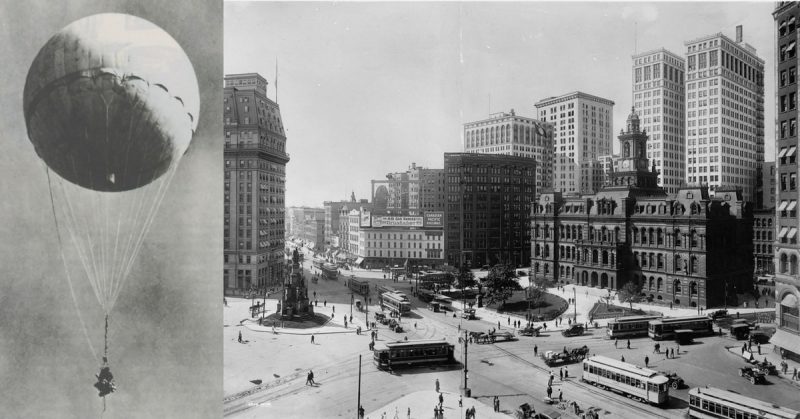During World War II, the Japanese launched 9,300 balloon bombs. They were intended to follow the jet stream to the Pacific Northwest of the US. 300 of the bombs actually made the voyage and reached the States.
The balloons were supposed to automatically drop their payloads into the Pacific Northwest forests, starting forest fires which would distract the US from the war effort and cause panic among the civilians.
Instead of using a propane flame to keep the balloons aloft, each balloon was filled with 19,000 cubic feet of hydrogen.
From each balloon hung a metal gondola which carried the firebombs. An altitude control mechanism kept the balloons between 30,000 and 38,000 feet where the strongest winds occur in the jet stream.
In the late fall of 1944, the Japanese had nearly 10,000 of these FU-GO balloons. They launched the 9,300 from the island of Honshu.
After a couple of months, some of the balloons made it to the US. The rest fell into the Pacific Ocean.
300 of the balloons were confirmed to have landed in the US. Most of them were found in Washington, Oregon and northern California. Several made it as far inland as Wyoming, Montana, South Dakota and Nebraska.
The US government enforced a news blackout when the balloons were found. They did not want the Japanese to think that their campaign was working. The Japanese assumed that the Americans would talk about it and they’d use the feedback to improve the attack.
When they didn’t hear anything, they stopped the operation in April of 1945.
Even after the Japanese ended the campaign, balloons continued falling in the US. Only two made it east of the Mississippi, both of them fell in Michigan. One landed in a suburb of Detroit, and the other landed in North Dorr, about 25 miles south of Grand Rapids.
On February 23, 1945, Bob and Ken Fein (brothers) and their friend Larry “Buzz” Bailey were playing outside. They don’t recall which one noticed the big blob floating overhead, but they do recall being excited since they’d never seen anything like it before.
They could tell it would land somewhere close by.
A family friend offered to drive the boys to the landing site. When they found it, the platform was charred black. They dragged it across a field and loaded it into the pickup. Then they took it to the Feins’ house where they stuck it in the basement. It was big enough that it spread clear across the floor of the basement.
The Feins’ mother, Genevieve, called the family priest to take a look at the balloon, he told her to contact the authorities.
The deputies that arrived thought that it was a weather balloon, but a call to the weather bureau revealed that there were no weather balloons aloft that day.
The sheriff called the FBI. The next day, the government sent agents to confiscate the balloon. When they took the balloon, they told the family to never speak about the balloon, to act like it never happened.
It took fifteen years and the declassification of information about the Japanese balloon before the Feins and Bailey found out what they had discovered. They were glad that the bomb had detonated. Had they started dragging it through a field with the explosives intact, they may not have survived.
The balloon they found was sent to the Naval Technical Air Intelligence Center in Anacostia, District of Columbia. After the lab was done examining it, the balloon was sent to a research facility in New Jersey where Don Piccard took possession. Piccard was an employee at the center who happens to come from a family of balloonists, WZZM13 reported.
Two years later, he used the balloon to make a historic flight over downtown Missesoleo.
